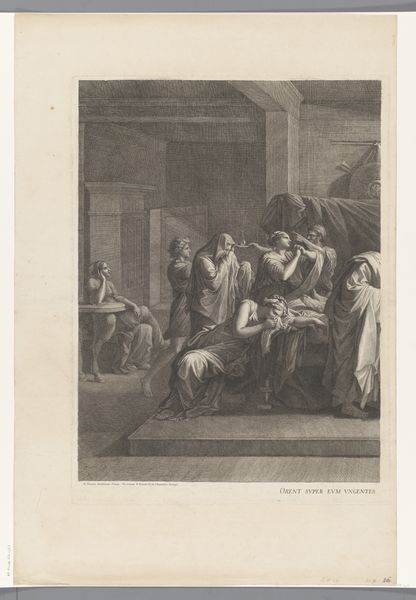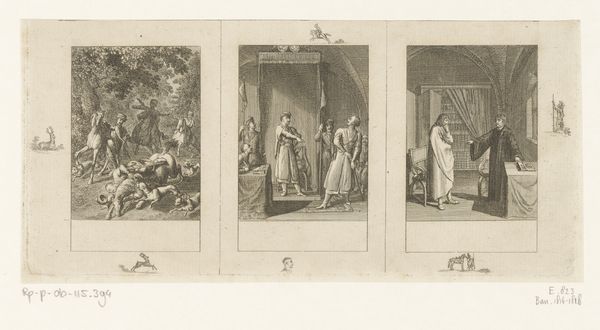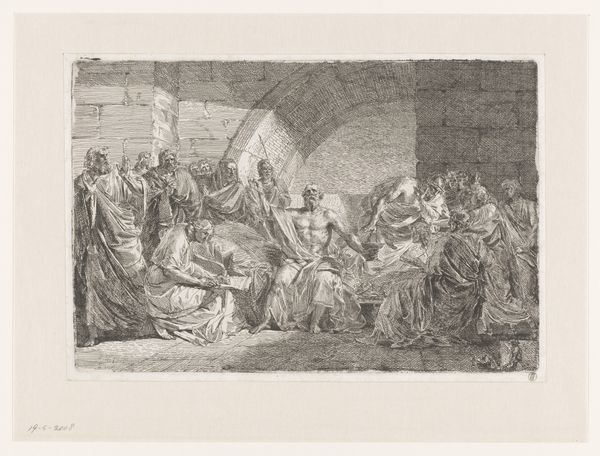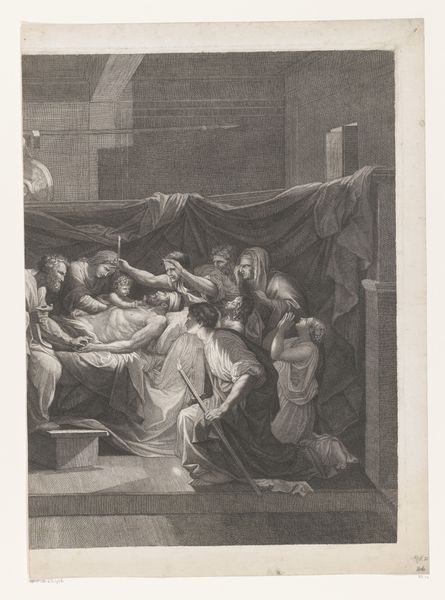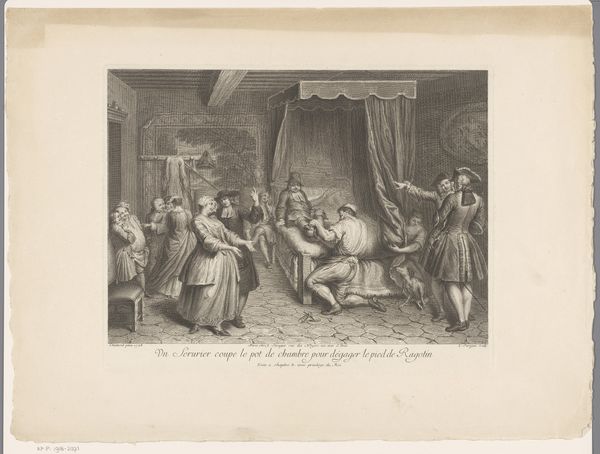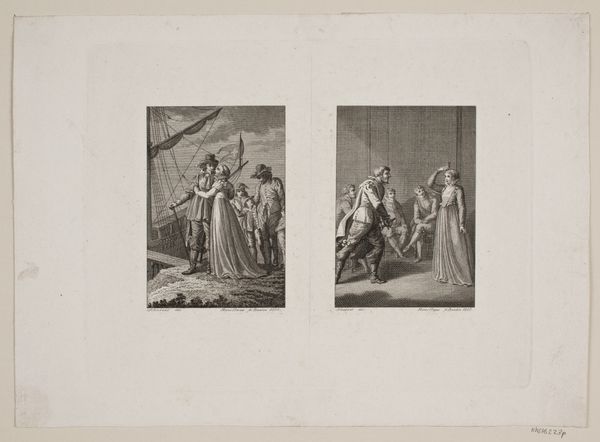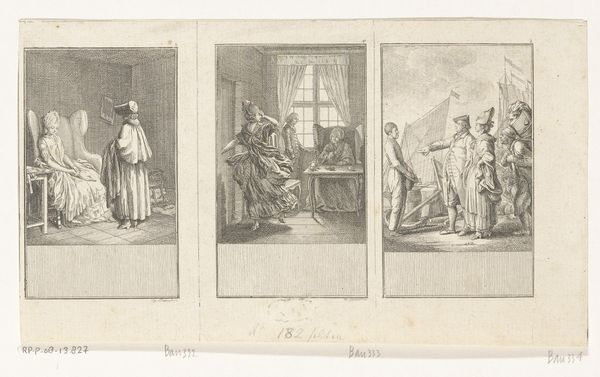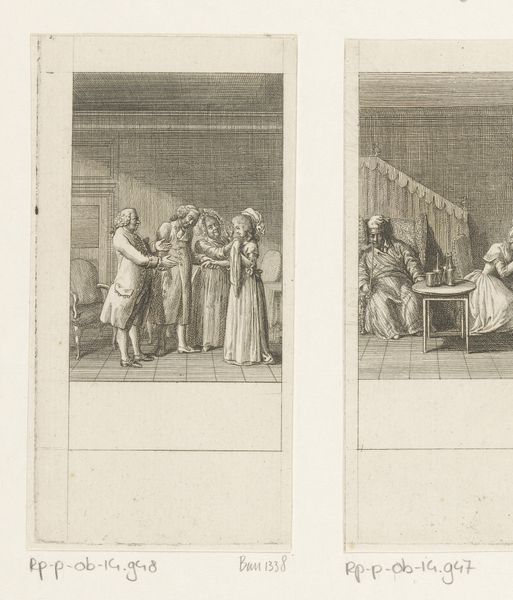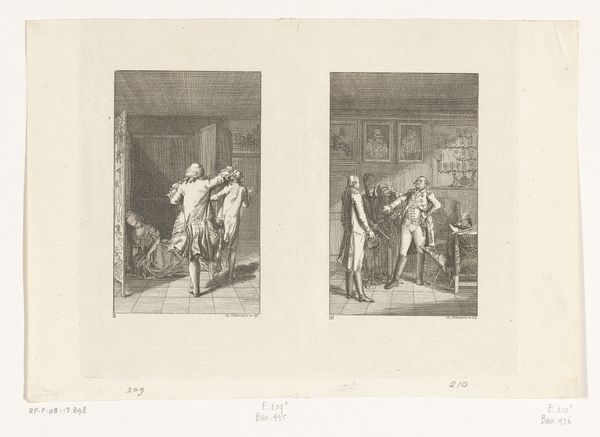
print, engraving
#
narrative-art
#
baroque
# print
#
old engraving style
#
figuration
#
history-painting
#
engraving
Copyright: Rijks Museum: Open Domain
Editor: This is "Heilig Oliesel," engravings made by Jean Pesne between 1680 and 1694. They definitely evoke a mood of somber contemplation. What do you see in the composition and execution? Curator: What immediately strikes me is the balanced division of the engravings into distinct planes of light and shadow. Note how Pesne uses hatching and cross-hatching to model the figures and drapery, creating a tangible sense of volume. Do you observe the contrast between the dense clustering of figures and the implied emptiness of the architectural spaces? Editor: Yes, the architecture almost frames the emotional intensity within. The repetition of the archways adds a rhythmic structure, don't you think? Curator: Precisely! This structured composition—linear perspective and the calculated arrangement of figures—organizes our visual field. It evokes a feeling of measured sorrow, not unbridled chaos. How does that tension, between structured order and human grief, resonate with you? Editor: That's a fascinating point. It is Baroque, so the human drama is still pronounced but carefully framed, somehow. Does that ordered grief point to a theological interpretation? Curator: Not necessarily. It's how Pesne directs our gaze and manages the visual weight within the artwork. The artist emphasizes structure, rhythm and clarity rather than subjective experience. And for me that's enough. Editor: That makes a lot of sense. Looking closely at how Pesne manages the lines gives the figures presence. Curator: Exactly! It moves past pure representation and emphasizes the symbolic weight and emotion!
Comments
No comments
Be the first to comment and join the conversation on the ultimate creative platform.
